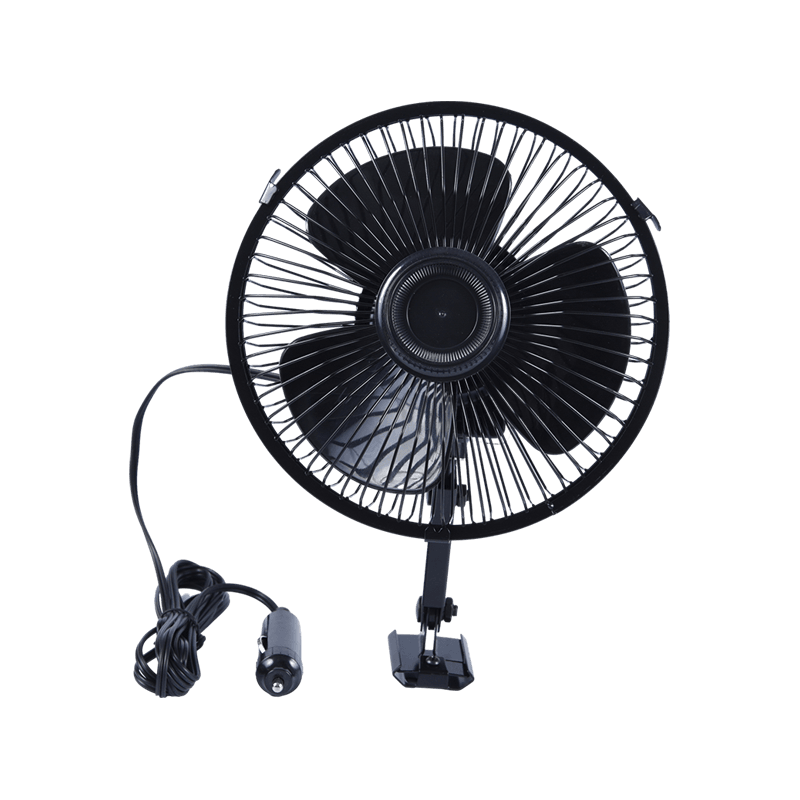The Vehicle Fan, commonly known as the engine cooling fan, is a vital component for maintaining optimal engine temperature. Located behind the radiator, its primary function is to draw air through the radiator core, dissipating heat from the engine coolant. Failure of this fan can lead to significant engine damage. Recognizing the early symptoms of a failing Vehicle Fan is crucial for timely intervention and preventing costly repairs.
Here are the most common indicators that a Vehicle Fan may be malfunctioning:
Engine Overheating, Especially at Low Speeds or Idle:
Symptom: The engine temperature gauge climbs into the red zone, or a warning light illuminates, primarily during stop-and-go traffic, extended idling, or low-speed driving. This occurs because insufficient airflow crosses the radiator without the fan's operation or the vehicle's forward motion.
Mechanism: A failing fan (electrically or mechanically) cannot provide the necessary airflow when the vehicle isn't moving fast enough to force air through the radiator naturally.
Unusual Noises from the Fan Area:
Symptom: Audible grinding, roaring, humming, or rattling sounds emanating from the front of the engine compartment, particularly when the fan is engaged or the engine is running.
Mechanism: These noises often point to worn bearings within the fan motor (for electric fans) or a failing clutch assembly (for belt-driven mechanical fans). Damaged, cracked, or unbalanced fan blades striking surrounding components can also cause loud noises.
Fan Not Operating When Expected:
Symptom: The Vehicle Fan does not activate when the engine is hot and idling, or the air conditioning (A/C) is turned on. Most modern vehicles will command the fan to run when the A/C compressor is engaged, regardless of engine coolant temperature.
Mechanism: This points to potential electrical failure (blown fuse, faulty relay, damaged wiring, or failed fan motor) or, for clutch-driven fans, a seized or inoperative clutch mechanism. It can also indicate a problem with the Engine Control Unit (ECU) or cooling system temperature sensors.
Fan Runs Continuously at High Speed:
Symptom: The Vehicle Fan operates at maximum speed immediately upon engine start-up and continues regardless of engine temperature or driving conditions.
Mechanism: While sometimes commanded during severe overheating, constant high-speed operation often signals a fault. This could be a stuck relay, a short circuit in the control wiring, a failed fan control module, or a malfunctioning coolant temperature sensor sending incorrect data to the ECU. For clutch fans, a seized clutch can cause this.
Reduced or No Airflow from Cabin Vents (When A/C is On):
Symptom: While primarily related to cabin comfort, a failing engine cooling fan can impact the A/C system. Drivers may notice significantly reduced cooling efficiency or warm air blowing from the vents when the vehicle is stationary or moving slowly.
Mechanism: The condenser (part of the A/C system) relies on airflow through the radiator grille to dissipate heat. A non-functional Vehicle Fan prevents this airflow at low speeds/idle, causing A/C refrigerant pressures to rise excessively and cooling performance to plummet.
Why Prompt Attention is Crucial:
Ignoring symptoms of a failing Vehicle Fan can lead to severe engine overheating. Prolonged overheating can cause catastrophic damage, including:
Warped cylinder heads
Blown head gaskets
Cracked engine blocks
Seized pistons
These repairs are significantly more expensive than diagnosing and replacing a faulty fan assembly or its related components.
The Vehicle Fan is a critical safeguard against engine overheating. Awareness of its common failure symptoms – overheating at idle, unusual noises, failure to operate, constant high-speed running, and compromised A/C performance at low speeds – empowers drivers and technicians to identify problems early. Any suspicion of Vehicle Fan malfunction warrants prompt inspection by a qualified automotive professional to diagnose the root cause accurately and prevent potential engine damage. Regular cooling system maintenance checks also help ensure the fan and its supporting systems remain functional.


 English
English Português
Português عربى
عربى 中文简体
中文简体











